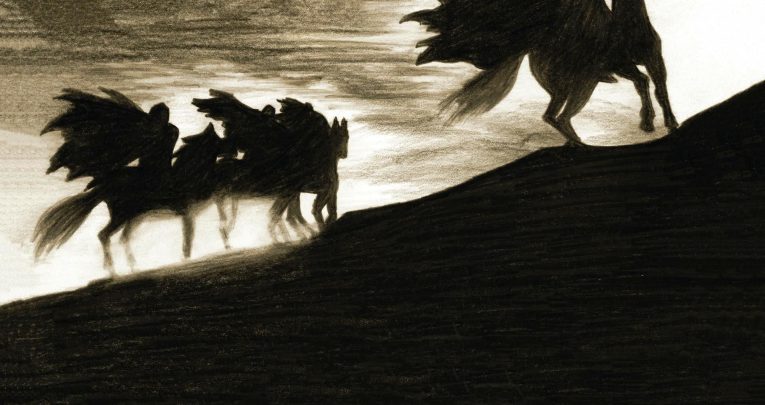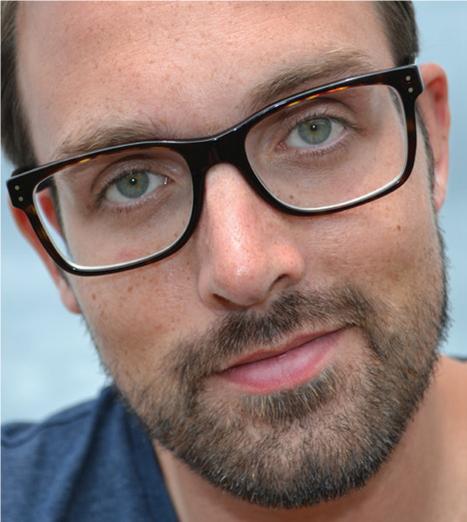Why Are So Many Children Attracted To Dystopian Fiction?

Should teachers be worried that increasing numbers of KS2 pupils are devouring graphic and gory dystopian fiction aimed at young adults? Far from it, says Martin Stewart

I have a very strong memory of reading Jurassic Park when the film was in cinemas: it was 1993, and I would have been 10 years old. I had gone straight from Enid Blyton to adult novels, because that was what we did back then – the connective tissue of ‘Young Adult’ didn’t exist.
YA fiction is a uniquely diverse, genre-crossing world. Within its walls can be found books for any reading ability, written with wit, creativity and skill; and representing racial, sexual and gender issues with consideration and love. Given all this variety, then, the apparent stranglehold of dystopian fiction on YA has raised questions for the curators of young people’s reading in school and at home.
Why are these stories – The Hunger Games, Maze Runner, Divergent, et al – so popular with the nation’s youth – often including children considerably younger than the ostensible target audience amongst their fans? Are they suitable? Are they having a deleterious effect on young readers?
A fast fix
The appeal of dystopia is no mystery. Fictional characters are driven by loss and need, and dystopian protagonists are the purest distillation of that drive. They have lost their liberty, their dignity, their safety – and they need everything. Their lives are structured by the antagonist – the oppressive state/occupying force/space aliens – so the enemy is clear and powerful and loathsome.
Dystopian characters are hard-wired with the need for freedom, reflecting the desire of young readers beginning to push against the boundaries of their own parent-controlled world, and their stakes are built into the setting; into their habits and behaviours and clothing. Everything a book needs is on the first page, instant and sweet. Dystopia is the energy drink of plot, and it’s no surprise that young readers guzzle it down.
Before I was a writer I was an English teacher for six years, and I know that judgements on suitability are tricky and subjective; 10- and 11-year-olds are unique in their interests and maturity, and no two are alike. Which books children should be reading is only answerable on an individual basis, and that’s up to librarians, teachers, parents and, ultimately, the readers themselves. Young people know best what’s too scary or too violent for them, and they’ll put a book down if it makes them uncomfortable.
The violent content of many dystopian novels has been a cause for concern for some guardians, but it’s important to consider it in context. A violent scene in a book will place the reader inside the skin of the victim, the perpetrator, or both; and the imaginative agency required of them means the consequences of violence are explored with greater depth than in a video game or film. The acts of violence in YA novels, which might sound excessive if described in isolation, are given a resonance in context that allows a young reader to explore their consequences safely.
Positive choices
It’s almost trite, but it’s true – no reading is bad reading. The benefits of reading fiction on cognitive and empathic development, as well as the honing of language, are well established, and these apply to YA’s dystopian staples as much as any other text. And there’s more.
The essence of a dystopian world is the stripping away of the comforts and securities we take for granted. Experiencing that kind of privation through a book demands that the reader considers the means by which humanity could be maintained in such adversity – in other words, what it means to be human without the structures of civilised society to guide our behaviours. And what this always amounts to is love, compassion, courage, and friendship. Noble values, and universal; recognisable in all the greatest fiction.
So how should we, as custodians and promoters of reading, respond to a dystopiaobsessed young reader? The answer must surely be, with delight and encouragement. Hollywood adaptations have created a misconception among certain commentators that YA fiction is nothing but dystopian ‘Chosen Ones’ battling their sinister overlords. This is, of course, bunkum.
Your hungry reader might chew their way through a slew of dystopian series in quick succession – and once they do, they’ll be looking for their next fix. This is where we, the curators, can help, encouraging them into new areas, different genres and styles, and yes, into new dystopian worlds.
Discouraging or deriding any kind of reading is never a good idea – nor should we shy away from acknowledging these pop culture behemoths in classroom discussion. Instead, we should think about how dystopia draws on universal literary concerns. What makes the tough choices of Thomas in The Maze Runner so different from Ralph’s in Lord of the Flies? Or Katniss’ Hunger Games dream of a safe, free life so different from George and Lennie, grinding away on dry ranches in Of Mice and Men?
Tough choices and dreams are the lifeblood of fiction. No stories exist in a vacuum – their characters and themes intersect, and harnessing these big ideas could lead pupils more confidently towards a deeper understanding of set texts later on in their learning journey, and unlock their literacy skills in a manner that could help them succeed in other curricular areas.
Dystopian fiction is a safe and thrilling space in which young readers can challenge themselves with satisfyingly scary, adult-free, non-didactic stories about what it means to be human, and to consider the means by which authority is wielded. Rather than fear them, we should be excited when they grab the attention of a young reader, and do our best to shine light on the page.
Six great titles for younger dystopia fans
• Riverkeep (Martin Stewart, Penguin) More fantasy than dystopia – but satisfyingly dark and strange, this atmospheric tale will captivate readers who already love Patrick Ness, Neil Gaiman and Margo Lanagan.
• Lockwood & Co: The Creeping Shadow (Jonathan Stroud, Corgi) Stroud’s clever, funny and scary series recalls a kind of cross between Sherlock and Ghostbusters. Rick Riordan thinks the author is a genius – will your pupils agree?
• Movers (Meaghan McIsaac, Andersen Press) A thrilling and cinematic science fiction series with an original time travel twist, set in a futuristic world where some are born with the power to move people from another time.
• Slated (Teri Terry, Orchard) Terry has won multiple awards for her series about a girl whose memory has been erased. Is Kyla a terrorist, as the government claims, or is there something else going on?
• The Wordsmith (Patricia Forde, Little Island Books) Pacy and exciting speculative fiction that will start children thinking about the role of language and arts in society, and what the world would be like without them.
• Black Light Express (Philip Reeve, OUP) In Railhead, Reeve created a breathtakingly original setting in which sentient trains traverse the galaxy – Black Light Express is its equally brilliant sequel.












